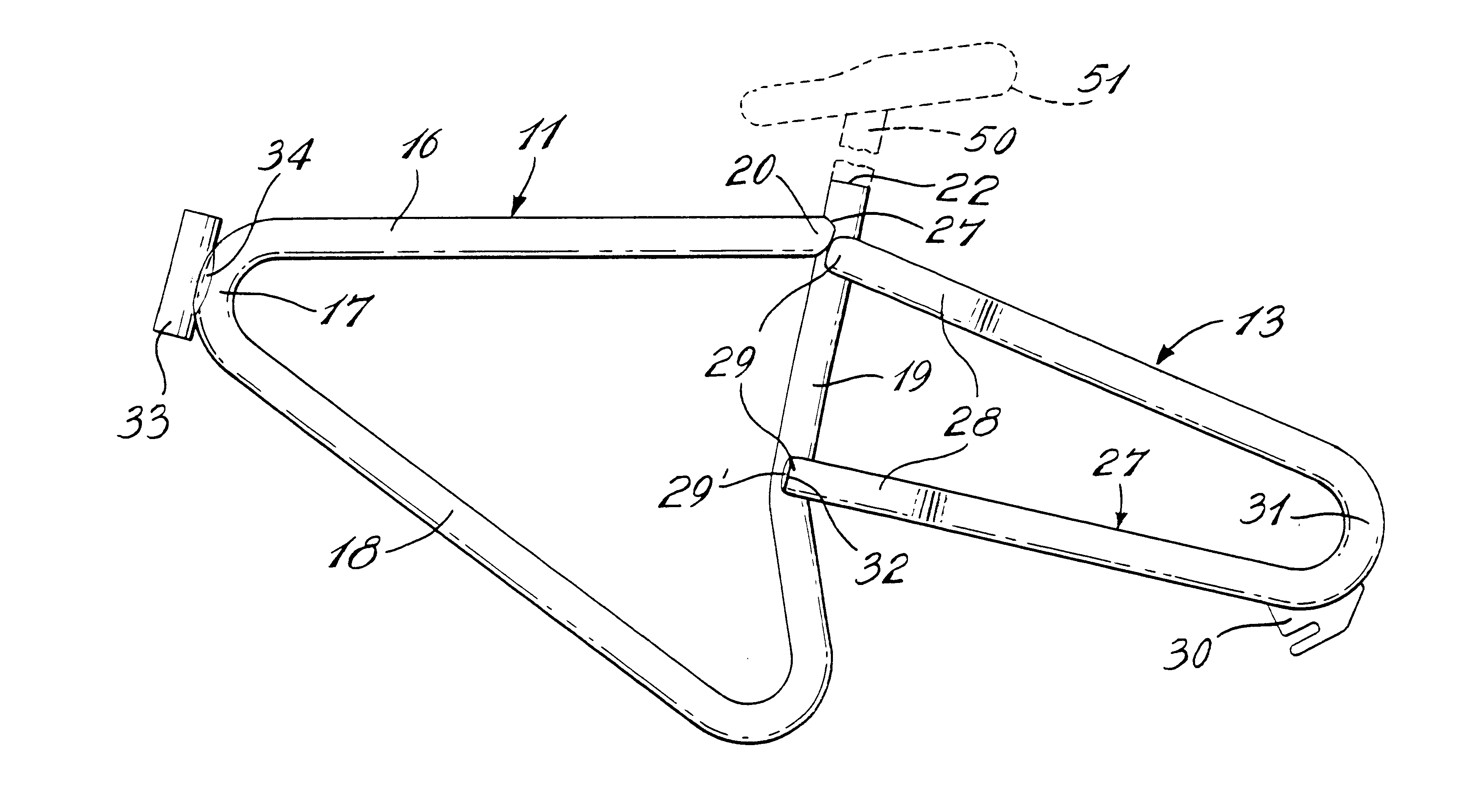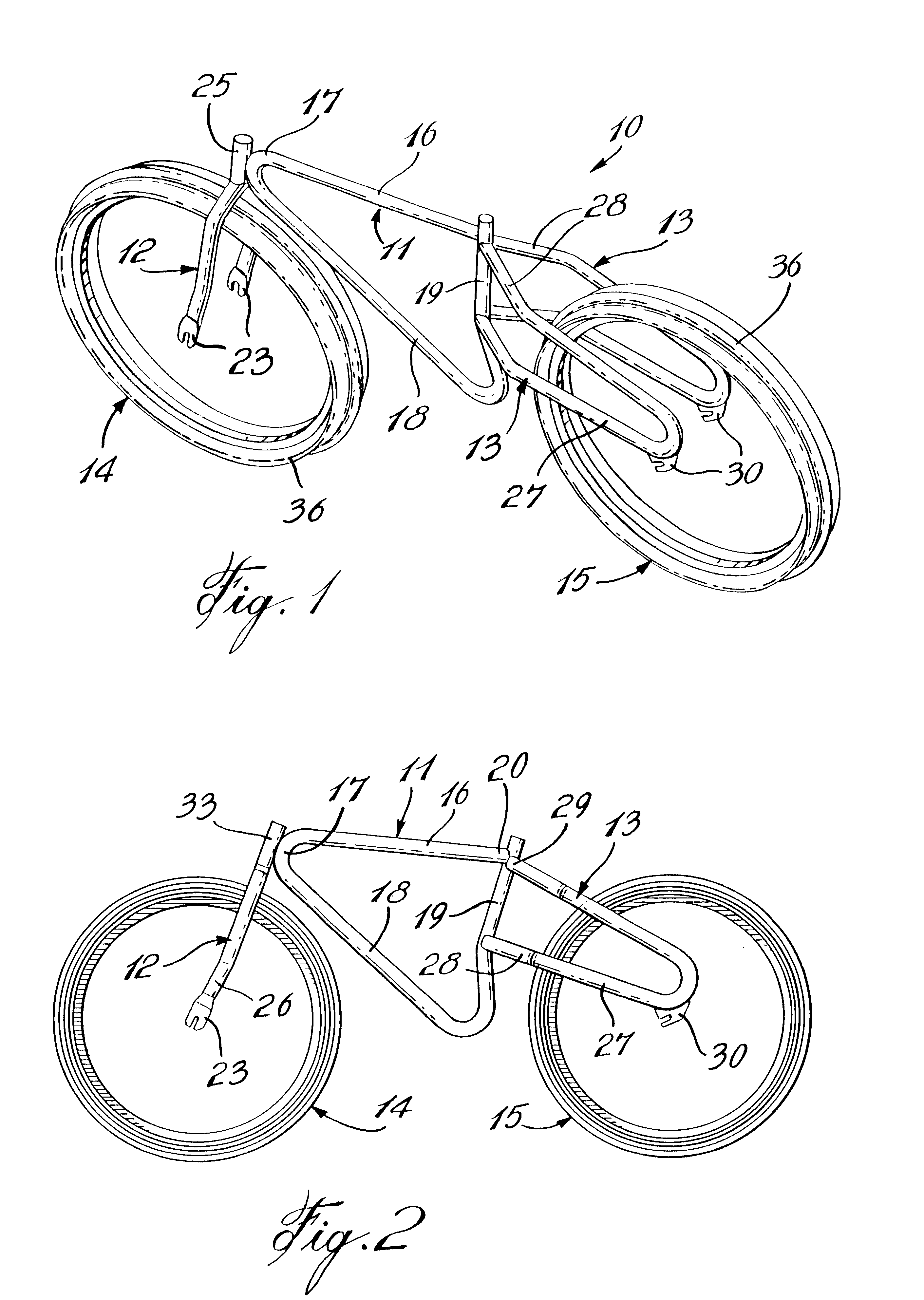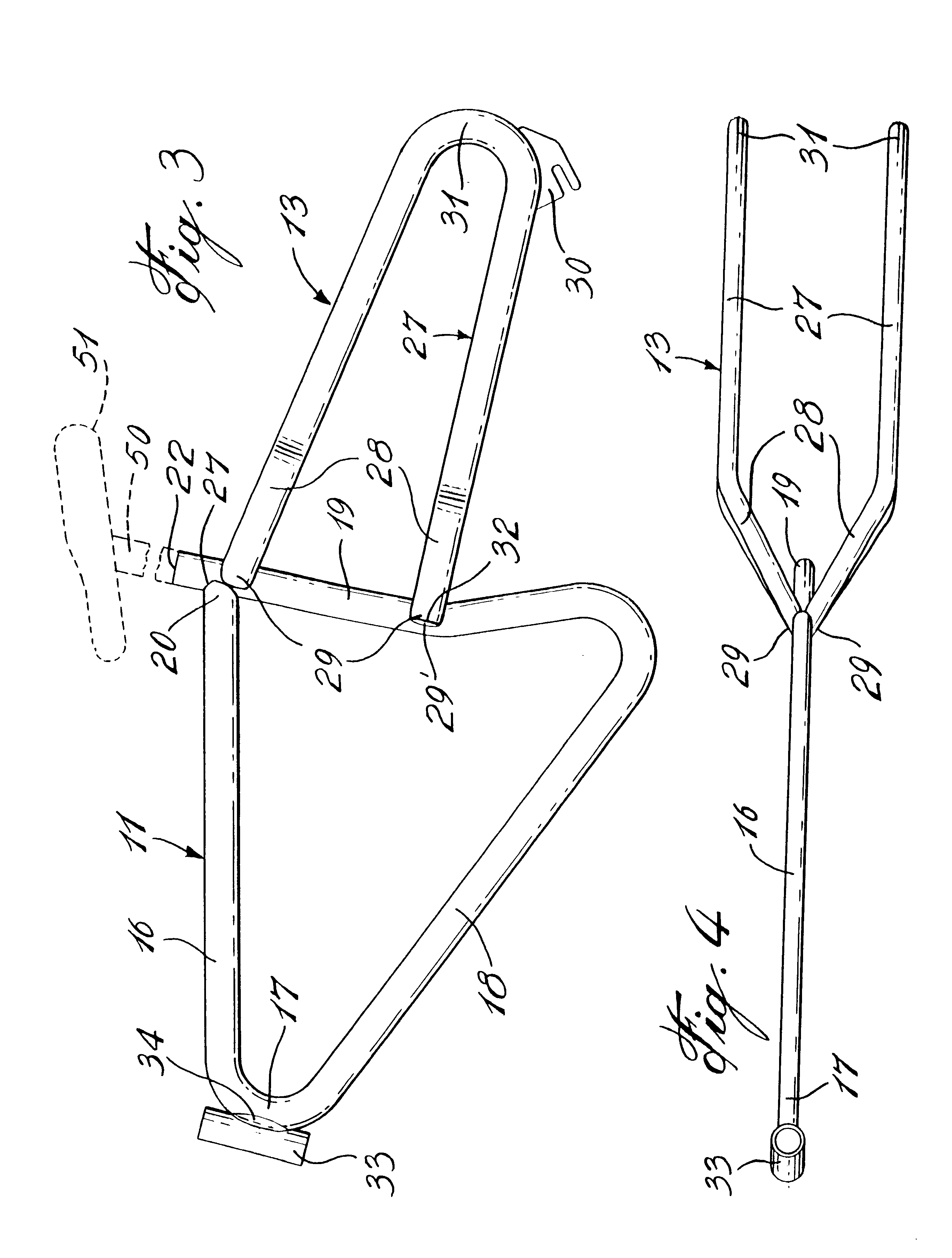All-terrain bicycle
a bicycle and all-terrain technology, applied in the field of all-terrain bicycles, can solve the problems of rider falling, tubular metal framework, and bicycles that are not practical for driving into very soft ground surfaces,
- Summary
- Abstract
- Description
- Claims
- Application Information
AI Technical Summary
Benefits of technology
Problems solved by technology
Method used
Image
Examples
Embodiment Construction
Referring to the drawings and, more particularly, to FIGS. 1 to 4, there will be described the construction of the tubular frame 10 of the all-terrain bicycle of the present invention. The tubular frame 10 is constructed from four frame sections of oval-like cross-section metal tubing and, namely, a main frame section 11, a front fork section 12 and a pair of rear fork sections 13. A front wheel 14 and a rear wheel 15 are respectively connected to the front fork 12 and the rear form 13 in a manner well known in the art and not illustrated herein.
The main frame section 11 is formed from a unitary tubular piece which is bent to form a straight top crossbar section 16, a curved head tube connecting section 17, a down tube section 18 and an upright seat support section 19. An end 20 of the top crossbar section 16 is welded at 21 near a top end 22 of the upright seat support section 19. A seat post 50, secured to a saddle 51 herein shown in phantom line, is received within the open top e...
PUM
 Login to View More
Login to View More Abstract
Description
Claims
Application Information
 Login to View More
Login to View More - R&D
- Intellectual Property
- Life Sciences
- Materials
- Tech Scout
- Unparalleled Data Quality
- Higher Quality Content
- 60% Fewer Hallucinations
Browse by: Latest US Patents, China's latest patents, Technical Efficacy Thesaurus, Application Domain, Technology Topic, Popular Technical Reports.
© 2025 PatSnap. All rights reserved.Legal|Privacy policy|Modern Slavery Act Transparency Statement|Sitemap|About US| Contact US: help@patsnap.com



